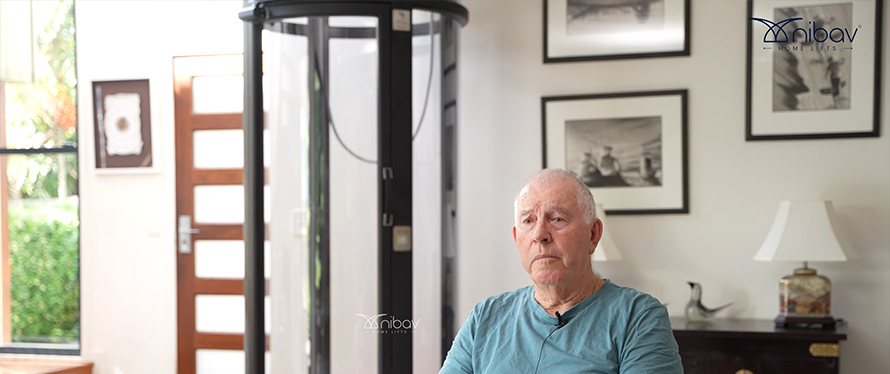What Are the Best Lifts for Physically Disabled Persons?
Accessibility is a basic human need for dynamics and freedom as well as a significant determinant of the individuals’ welfare condition. Disabled people equally appreciate and benefit from home or public space lifts depending on their nature of disability. Ranging from home lifts to platform and stair lifts, there are several types of lift solutions that make people’s lives easier and much more comfortable. This article looks at the possible opportunities available to physically disabled persons and what to look out for in a lift.
Understanding the Needs of Physically Disabled Persons
Special lifts meant for physically handicapped must have the standards so that physically challenged can easily use the lift with a focus on their safety. They include ease of access in wheelchairs, the interface that is easy to control and safety requirements met. A good choice of a lift should be one that blends into the context of the environment and enables people to be mobile on their own.
Types of Lifts for Physically Disabled Persons
The types of lifts available meet specific requirements in terms of mobility challenges. Below are the most suitable options for physically disabled individuals:
1. Home Elevators
Home elevators are increasingly growing popular and are a stylish means of getting between the floors. Incorporated with large cabins these elevators can provide people using wheelchairs and other mobility assistance devices. Some of these are higher safety features such as an emergency stop button, handrails and perfectly leveled for safety and comfort.

2. Platform Lifts
Platform lifts are also used for vertical movement of wheelchairs or persons of reduced mobility. These lifts are quite flexible hence they can be fixed indoors or even outdoors. They are useful when taking a step or a short vertical rise. Platform lifts are cheap solutions which also do not require much alteration of the structure of the building to install.
3. Stair Lifts
Stair lifts are not enough space to fit an elevator. These types include a seating unit that is fitted on a track that runs along the steps of the staircase and is controlled by a motor. For persons who can move from a wheelchair to the chairlift. The modern styles are the foldable types, seat belts and the remote controls as extra features.
Factors to Consider When Choosing a Lift
In choosing a lift, careful consideration of factors is important in order to choose the lift that will suit the user and his surroundings.
1. Space and Structural Requirements
Decide the amount of load bearing capacity for installation and whether additional support structure will be needed. Stair lifts and Nibav Home elevators are inclined for tighter spaces, while platform lifts means more space is needed.
2. Weight Capacity and Size
Take into account the weight which the lift should be able to handle including wheelchairs, mobility scooters and extra loads. The size of the cabin should also be large enough but easily accessible to wheelchair-bound individuals.
3. Safety Features and Compliance with Standards
Search for transport surfaces that have lift features such as non-slip floor, safety sensors on doors, emergency stop buttons and doors with auto control. Check whether the lift in the construction satisfies local safety requirements and barriers-free structures.
4. Cost and Maintenance
Both the cost of the investment and its maintenance. Though there are lifts which one can easily see are cheaper initially, the cost of using them lasts longer and they use more energy as compared to their efficient counterparts.
Top Brands and Models in the Market
Top manufacturers design Lift Systems that are modern and durable for use by physically challenged people. For instance, Nibav Vacuum Lifts are designed to be space saver, easy to fix and consume little power and these make them the most suitable for the current house build. Other brands are devoted to stair lifts and platform lifts and allow the installation of various options. This means that before you can settle for any particular solution, you need to undertake research on the trusted brands; besides consulting the professionals in the field.
Conclusion
Wheelchair lifts are not just a mobility aid but they are the key to doors of opportunity, self-esteem, and better lives. The options for mobility lifts include home elevators, platform and stair enhances the versatility of the product market. Selecting the right lift is not only a question of improving access it also assures one’s mobility and security. Get NIBAV HOME LIFTS for real value in technology and customized lift solutions for your home.
Frequently Asked Questions
1. What Are the Best Types of Lifts for Physically Disabled Individuals?
The best types have to do with mobility of the user and the space available in the home. Private home use is highly encouraged by Nibav home elevators.
2. How Do I Choose the Right Lift for a Physically Disabled Person?
Some of the other issues include; the mobility of the individual, the size and space needed for installation, weight issues and need for safety measures. It is possible to turn to a professional and experienced lift provider for help.
3. Are There Lifts Specifically Designed for Wheelchair Users?
Platform lifts and spacious home elevators are specially equipped to take wheelchairs with convenience and getting off as well as safety during transportation.
4. What Safety Features Should I Look for in Lifts for Disabled Persons?
Spacious home elevators are specially equipped to take wheelchairs with convenient getting in and getting off as well as safety during transportation.




